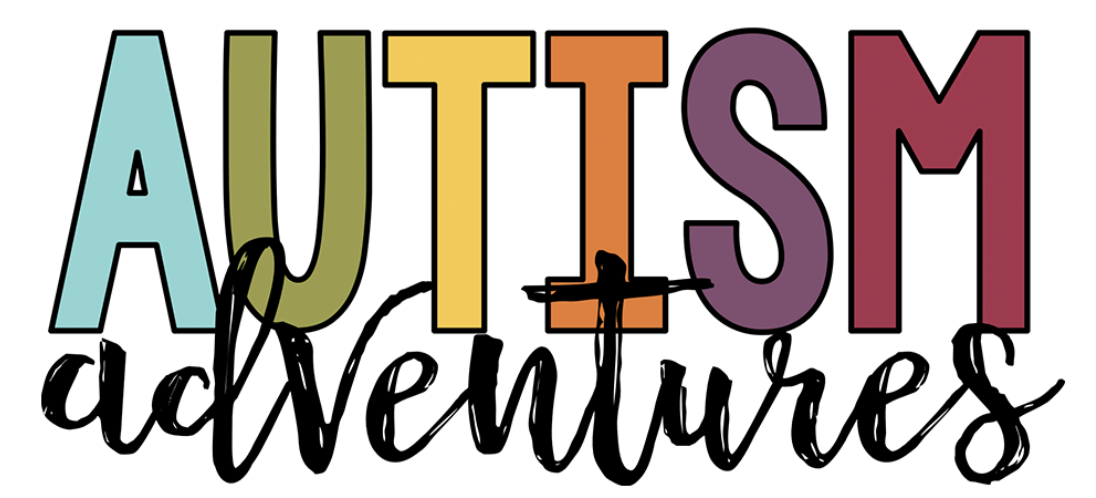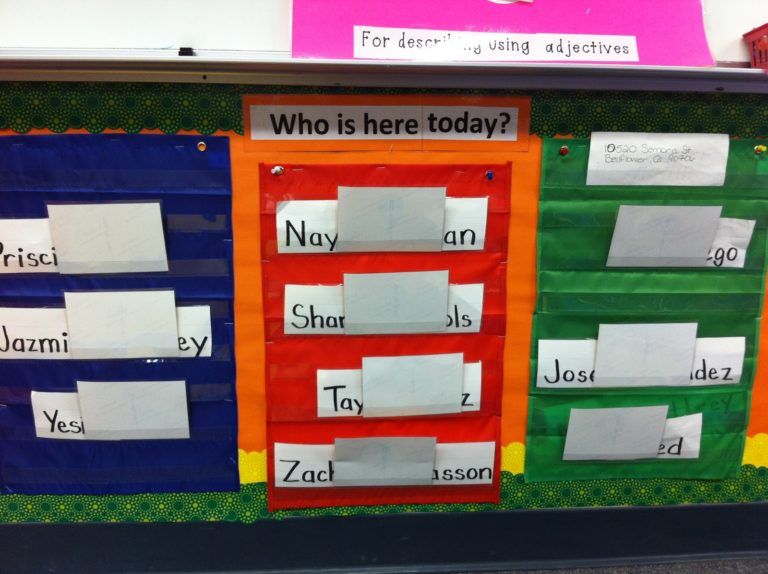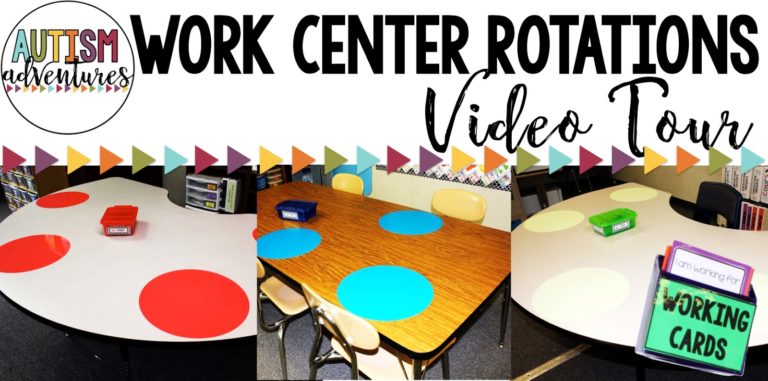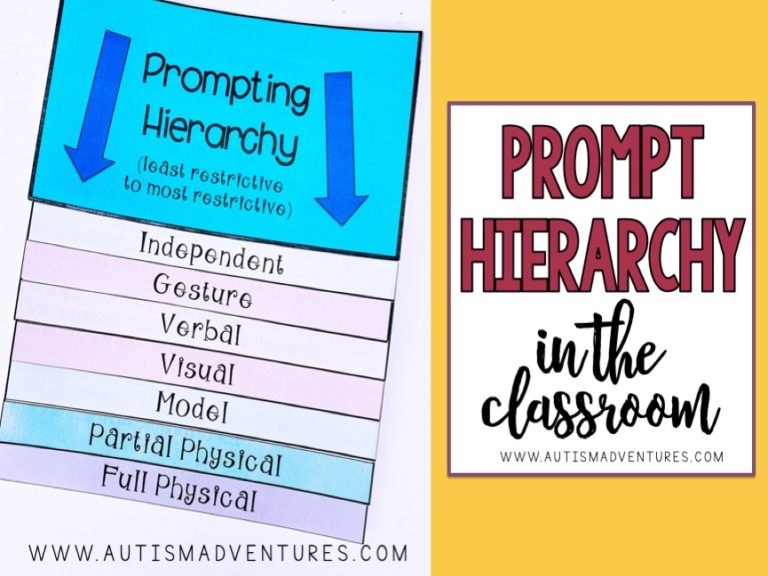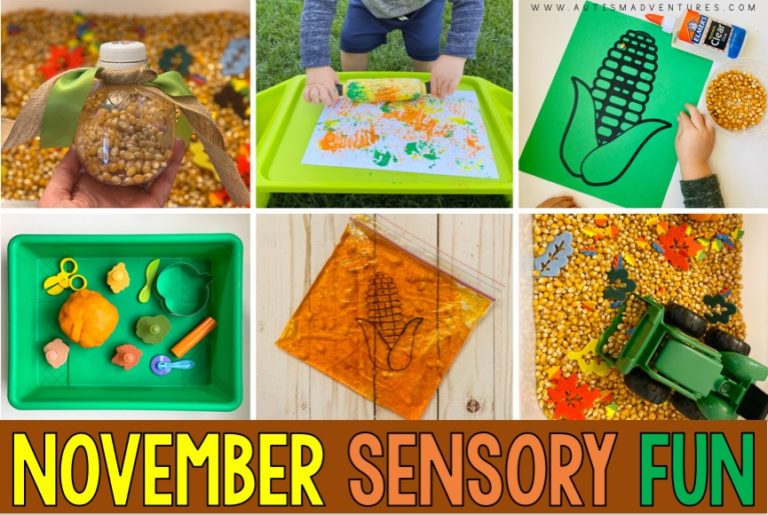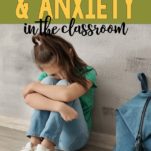Supporting Students With Anxiety And Depression In The Classroom
Mental health issues amongst kids are at an all-time high. The National Alliance on Mental Health reports 1 in 5 children have a mental health disorder, like anxiety or depression. The high frequency of these diagnoses obviously impacts schools. From absenteeism, behavioral issues, to academic performance teachers can see first hand the effects it has on their students. I have consulted with a mental health counselor that works in the elementary school setting and she has helped me to write this blog post on supporting students with anxiety and depression in the classroom
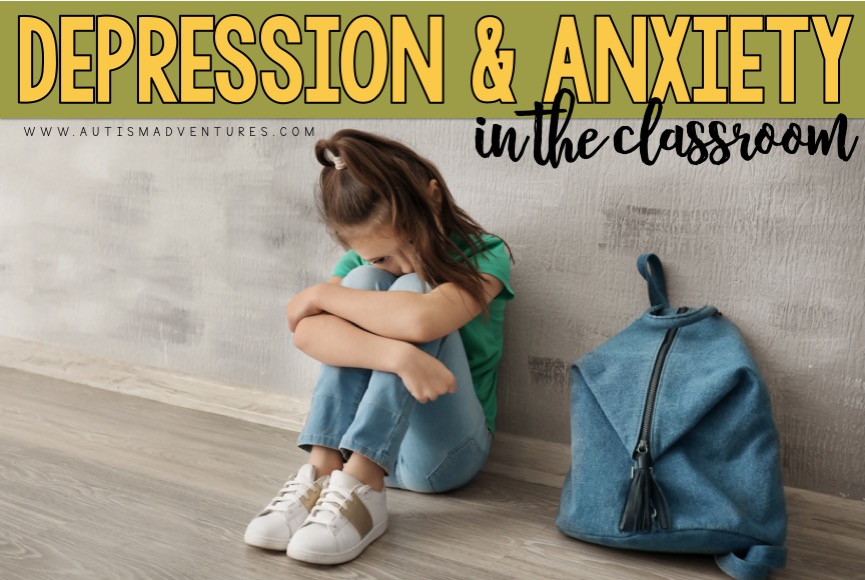
Traditionally student service personnel handle mental health issues within the school. Professionals like school counselors or social workers are stretched thin due to big caseloads, budget cuts and lack of resources. They rely on other staff to be the eyes and ears for them since teachers are with their students for most of the day.
Us special education teachers, in particular, are on the frontlines when it comes to dealing with mental health issues in the classroom. The challenge I faced when in the classroom was the lack of training I had when it came to treating depression and anxiety. I know how to make learning adaptive for my students but I’m not a mental health professional.
It’s important to know how to support students with anxiety and depression in the classroom though. Not just to help out my colleagues, but for the success and vitality for my students!
Today I’m going to share the information I’ve learned about identifying and helping kids cope with anxiety and depression. My goal for you is to have the knowledge and tools to support students with anxiety and depression in the classroom.
Identifying Anxiety and Depression In Students
Just like no two people are alike, so too are mental health disorders in students. If several students have anxiety doesn’t mean they all act a certain way, likewise with depression.
Unfortunately, students vary in how anxiety and depression manifest. Another challenge is that not all students who exhibit anxiety or depression have an official diagnosis. This can be particularly tricky for the primary grade teachers too. Fortunately, there are key components you can clue in on so you know how to best help your student. To find that out, I think it’s best to go straight to the source.
Mental health professionals have a wonderful guidebook, the DSM-5 (which stands for Diagnostic Statistical Manual 5th edition) This resource lists out all of the mental health disorders and the behavior/thoughts associated with this disorder. It is important to note that if you’re not in a position to make a diagnosis do not use the DSM-5 for that purpose. Leave that to trained professionals. I never used the DSM-5 myself, however I have had personnel use it with students and I understand how these findings can help teachers in the classroom. To learn more about it, read here.
DSM-5 is a great reference. If you’re wondering about a student’s behaviors and you’re not sure what is causing him or her to act a certain way it doesn’t hurt to use the DSM-5 as a guide, amongst other resources.
Here is how Anxiety and Depression are described in the DSM-5:
Anxiety From DSM-5
- Excessive anxiety and worry about a variety of life events, topics or activities. Worry occurs more often than not for at least 6 months.
- Individuals have difficulty controlling their worry. Worry can easily shift from one area to another in a person’s life.
- The anxiety and worry are accompanied by at least three of the following physical or cognitive symptoms (In children, only one symptom is necessary for a diagnosis
- Edginess or restlessness
- Tiring easily; more fatigued than usual
- Impaired concentration or feeling as though the mind goes blank
- Irritability (which may or may not be observable to others)
- Increased muscle aches or soreness
- Difficulty sleeping (due to trouble falling asleep or staying asleep, restlessness at night, or unsatisfying sleep)
- Worry causes significant distress and impairment in daily life.
- Worry is not linked to other medical disorders or substance use.
Depression From DSM-5
Symptoms must have occurred for 2+ weeks and have significant impairment on a person.
- Depressed mood or irritability
- Noticeable lack of interest or pleasure in activities once enjoyed
- Significant weight loss (or poor appetite) or weight gain, or failure to gain appropriate weight
- Insomnia or hypersomnia
- Psychomotor delay
- Fatigue or loss of energy
- Feelings of worthlessness
- Inability to think or concentrate, or indecisiveness
- Recurrent thoughts of death (not just fear of dying), or suicidal ideation, plan, or attempt
This is a great clinical list that describes a variety of behaviors. You might be wondering what it looks like in a classroom setting though. What do students with anxiety and depression look like?
Here are some examples of everyday life to better help illustrate the list of clinical behaviors in the DSM 5.
Anxiety In The Classroom
- Student worries excessively about getting homework in on time or doing well on an assignment/test.
- Worry about one school-related issue can spiral into other areas of concern, having enough time to study, preoccupied about the learning environment, feeling overwhelmed about todo list.
- As student worries about an issue they might tense up, be unable to sit for long periods of time and moves about the classroom, get frustrated at peers or teachers, fidget, lose focus on school work.
- Students may come to school tired because they lose sleep from worrisome thoughts.
- Prolonged worry may cause muscle aches from being tensed up and student complain about being sore.
Depression In The Classroom
- A student may appear sad or down throughout the school day.
- Student shows disinterest in a favorite subject. For example, if they loved to read during literacy the disengage from reading, not care about completing work, quality of homework declines.
- See changes in eating habits during snack or lunchtime.
- Comes to school tired, may fall asleep easily.
- Expresses thoughts, like “what’s the point.” Or becomes defiant with an “I don’t care attitude” that wasn’t there before.
- Gets moody or angry at teachers or peers.
- Unable to focus on tasks.
- Not sure how to go about getting tasks completed where they may have known how to before.
From this list of behaviors, you might see some similar traits, like feeling tired or inability to focus. While it’s easy to see the commonalities, the source of these behaviors differs. It’s good to ask yourself, “do I see excessive worry or a depressed mood with this” to help differentiate what your student is expressing.
Now that you can identify what may be causing certain behaviors in your student you can start figuring out what support will help him or her.
Below is a list of strategies to help support your student with anxiety or depression in the classroom.
It is important to note that if your student does not have a diagnosis or starts exhibiting behaviors for the first time it might be beneficial to share your observations with the appropriate adults or school staff that are in the student’s life.
“Lots of kids come to school with invisible backpacks weighted with struggles. Stress, worry, fear, anxiety, trauma, unmet physical needs, loneliness, anger, sadness, and hopelessness can make them so heavy; too heavy to make learning happen. Notice and love them instead.”
Bethany Hill–Principal
Strategies To Support Anxiety In The Classroom
Take Breaks
- Teach them how to take deep calming breaths.
- Stop the task at hand and have them take a walk, listen to music, talk it out, or do something that is soothing or distracting.
- Teach students how to take a break. Read more HERE.
Teach Problem Solving Strategies
- Write a social story that identifies the worry and things students can do to lessen the anxiety.
- Map out the students worry and solutions he or she can use to address the concerns. For example, if a student is worried about not finishing lunch in time can write out steps s/he can take to eat lunch, like sit down right away, eat without talking to friends for the first 5 minutes, give self permission not to finish lunch if s/he doesn’t like the food or feels full.
- Come up with affirmations to debunk worrisome thoughts.
- Teach children that just because they think certain thoughts doesn’t mean those thoughts are true. Talk about realistic thinking vs unrealistic thinking.
Create Predictability
- Use visuals, schedules and pictures to help students know what to expect in their day.
- If possible set-up a routine that minimizes their anxiety. For example if walking in a crowded hallway makes them anxious can they head to the next class before everyone else?
- Have frequent conversations about the adults at the school the student can access for help.
- Create an “plan of action” for a student. If a child is feeling very anxious or worried where can they go, who can they talk to, what can they do?
- Put together a calming kit with their favorite calming devices like a stress ball, stuffed animal or chew toy.
Strategies To Support Depression In The Classroom
Interpersonal Communication
- Build rapport with your student.
- Be an empathetic listener. Validate their feelings.
- Paraphrase what they say to signal that you understand how they feel.
- Monitor for suicidal ideation.
Create An Inviting Environment
- Keep things upbeat and positive, even if students are down.
- Use strength based teaching strategies to help empower students. Give students opportunities to use their strengths in the classroom. Compliment their strengths
- Model “glass is half-full” attitude.
- Make accommodations if needed. Provide breaks, adapt expectations or homework load.
Teach Coping Skills
- Work with students to get organized and prepared for tasks if they are not able to.
- Use goals to help foster motivation.
- Help them problem solve through their struggles.
- Try to keep routine and schedule predictable.
- Talk about feelings and how to label them.
It can be difficult to see our students struggle, especially when it comes to hard situations like anxiety and depression. We care about our students and have their best interest at heart. You were gifted with the opportunity to be there for your child.
Properly identifying what anxiety and depression is, along with using the appropriate tools, will help you be successful supporting your students with anxiety and depression in the classroom.
Please, please, do not walk away from this post and start diagnosing students your self. This post was written to help provide you with a bigger picture idea as a teacher and to better equip you to work tandem with a mental health counselor. Diagnosis’ can be a tricky subject depending on the age of your student. Under no circumstances should teachers be handing out diagnosis.
Like what you read? Don’t forget it, PIN IT!

